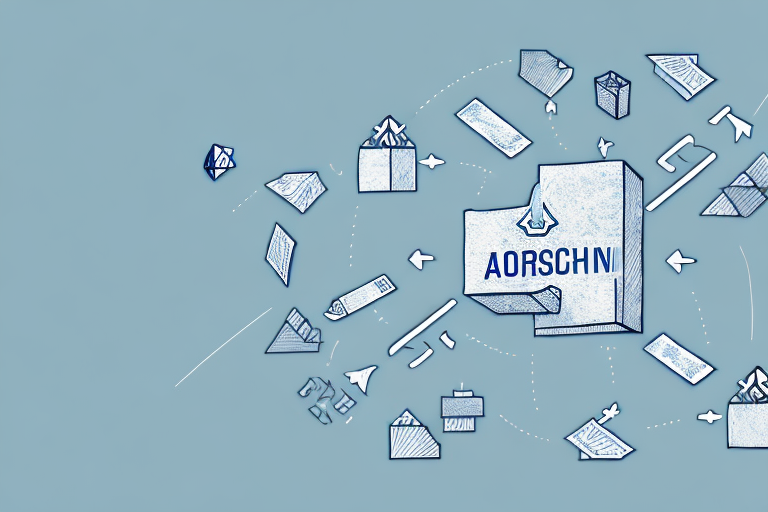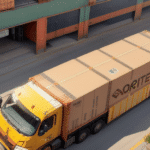Understanding Preferential Duties in the Supply Chain
Preferential duties are a crucial element of international trade, significantly influencing the supply chain dynamics. They affect the cost of goods, the accessibility of trade routes, and the competitive landscape for businesses worldwide. This article provides an in-depth analysis of various preferential duty programs, their strategic impact on businesses, compliance regulations, eligibility criteria, and common challenges in implementation. Let’s explore these aspects in detail.
The Role of Preferential Duties in International Trade
Preferential duties refer to reduced customs tariffs granted on imports and exports under specific conditions. Governments implement these duties to protect domestic industries, promote economic growth, and encourage trade with select countries. The primary objective is to create a competitive advantage for domestic businesses by offsetting lower production costs or subsidies enjoyed by foreign competitors.
Preferential duties also aim to foster economic development by supporting key industries essential to a nation's growth. For example, the World Bank often endorses preferential trade agreements to aid developing countries in accessing broader markets. However, these duties can sometimes lead to trade diversion, where trade flows shift to less efficient partners, potentially increasing consumer costs and reducing market competition.
According to the World Trade Organization (WTO), while preferential duties can enhance trade relationships, they may also trigger trade disputes among nations feeling disadvantaged by such arrangements.
How Preferential Duties Affect the Cost of Goods in the Supply Chain
Preferential duties significantly influence the pricing structure within the supply chain. When preferential duties are applied, the import cost of goods from certain countries may decrease, enhancing their competitiveness. Conversely, exports to countries with preferential duty arrangements may become more expensive, impacting profitability.
The specific impact varies across industries and supply chain structures. For instance, a manufacturing company sourcing raw materials from a country benefiting from preferential duties may reduce production costs. On the other hand, exporting finished goods to a market with high preferential duties may require strategic pricing adjustments to maintain competitiveness.
Staying informed about changes in preferential duty programs is crucial for businesses. Understanding rules of origin and maintaining accurate documentation are essential to qualify for these duty rates, as outlined by ShipScience’s Compliance Resources. Non-compliance can lead to increased costs and supply chain delays. Diversifying sourcing strategies and expanding customer bases can mitigate the adverse effects of preferential duties.
Preferential Duties and Their Impact on Business Strategy
Preferential duties compel companies to adapt their business strategies to either take advantage of or compensate for the benefits and challenges they present. Businesses reliant on imports from non-preferred countries may need to seek alternative suppliers or adjust their pricing strategies to stay competitive.
Conversely, companies eligible for preferential duty programs can integrate these benefits into their strategic planning. This might involve investing in production facilities within preferred countries or renegotiating supplier contracts to ensure product eligibility under preferential programs.
Monitoring changes in preferential duty statuses is vital. For example, if a primary import partner loses its preferential status, businesses must quickly adapt to avoid increased costs and diminished market position. Proactive strategic adjustments help maintain competitiveness in a fluctuating trade environment.
The Different Types of Preferential Duty Programs and How They Work
Several types of preferential duty programs exist, each with distinct eligibility criteria and benefits:
- Free Trade Agreements (FTAs)
- Generalized System of Preferences (GSP)
- Regional Trade Agreements (RTAs)
- Special Programs for Developing Economies
Each program has specific rules of origin that determine the national origin of a product, such as the ShipScience Rules of Origin Guide. Compliance with these rules and proper documentation, including certificates of origin, are mandatory to benefit from reduced tariffs.
Businesses should evaluate which preferential duty program aligns best with their products and markets. Regularly reviewing eligibility is essential, as changes in trade agreements or regulations can affect program suitability. For detailed program comparisons, refer to the Trade.gov Preferential Trade Program Overview.
The Importance of Compliance with Preferential Duty Regulations
Adhering to preferential duty regulations is paramount to avoid legal penalties and supply chain disruptions. Non-compliance can result in significant fines, product seizures, and delays in customs processing. Businesses must ensure they meet all eligibility criteria and maintain accurate records to leverage preferential duties effectively.
Implementing robust compliance monitoring systems is essential. This includes establishing internal controls, tracking product movements, and staying updated with regulatory changes. Utilizing compliance management software can streamline these processes, ensuring ongoing adherence to preferential duty requirements.
Compliance not only prevents adverse consequences but also offers competitive advantages. By optimizing costs through preferential duties, companies can enhance profit margins and offer more attractive pricing to customers. Additionally, demonstrating compliance fosters a positive industry reputation, appealing to socially conscious consumers and investors.
How to Determine Eligibility for Preferential Duty Programs
Determining eligibility for preferential duty programs involves understanding complex criteria and rules of origin. Companies must accurately establish the national origin of their products and ensure they meet specific program requirements. Consulting with customs brokers or compliance experts can aid in navigating these complexities.
Proper documentation is crucial for proving eligibility. This includes obtaining and maintaining certificates of origin and other required compliance documents. Businesses should regularly audit their products and supply chains to confirm continued eligibility, especially in light of evolving trade agreements and regulations.
Weighing the benefits against the costs of participation in preferential duty programs is essential. While reduced tariffs can enhance market competitiveness, the resources required for eligibility verification and documentation must be considered. For assistance, resources like ShipScience’s Eligibility Services can provide valuable support.
Best Practices for Managing Preferential Duties in the Supply Chain
Effectively managing preferential duties within the supply chain requires a strategic approach. Here are some best practices:
- Map the supply chain to identify potential risks and opportunities.
- Monitor regulatory changes and adjust compliance processes accordingly.
- Implement internal controls to ensure adherence to regulations.
- Leverage technology and automation to track product movements and compliance.
- Collaborate with customs brokers and consultants to mitigate risks.
Establishing clear communication channels with suppliers and customers is also vital. This ensures mutual understanding of responsibilities related to preferential duty compliance and facilitates early identification of potential issues. Regular audits and reviews of compliance processes help maintain their effectiveness and adapt to any regulatory updates.
Common Challenges in Implementing Preferential Duty Programs and How to Overcome Them
Implementing preferential duty programs presents several challenges, especially for companies new to international trade. Common obstacles include:
- Understanding and navigating complex regulations and eligibility requirements.
- Documenting product origins accurately and adhering to rules of origin.
- Adapting business strategies to leverage preferential duty benefits effectively.
- Ensuring ongoing compliance to avoid legal and financial repercussions.
To address these challenges, companies should invest in comprehensive training programs to enhance their understanding of preferential duty regulations. Establishing dedicated compliance teams and utilizing specialized compliance software can streamline the documentation and monitoring processes.
The application process's complexity can be mitigated by thorough preparation and maintaining organized records. Building strong relationships with experienced customs brokers and consultants can provide valuable guidance and support throughout the implementation process.
Awareness of potential risks, such as the loss of preferential status due to non-compliance or regulatory changes, is essential. Implementing proactive strategies to stay informed and adaptable ensures businesses can swiftly respond to any shifts in the trade environment.
The Future of Preferential Duty Programs and Their Role in Global Trade
The landscape of preferential duty programs is continually evolving in response to globalization and economic shifts. Despite uncertainties, preferential duty programs are expected to remain integral to global trade, promoting economic growth and development, particularly in emerging economies. They help reduce trade barriers, fostering more robust international trade relationships.
As trade policies and economic alliances change, businesses must remain agile, continuously monitoring regulatory adjustments and adapting their strategies accordingly. Embracing technological advancements and leveraging data analytics can enhance the management of preferential duties, ensuring sustained competitiveness in the global market.
Conclusion
Preferential duties are a fundamental component of international trade, significantly influencing the cost structure, trade routes, and competitive positioning of businesses. A thorough understanding of preferential duties, their strategic implications, compliance requirements, eligibility criteria, and implementation challenges is essential for companies engaged in importing and exporting.
By adopting best practices and ensuring strict compliance with regulations, businesses can effectively utilize preferential duty programs to enhance their global trade operations and maintain a competitive edge in the international marketplace.




















